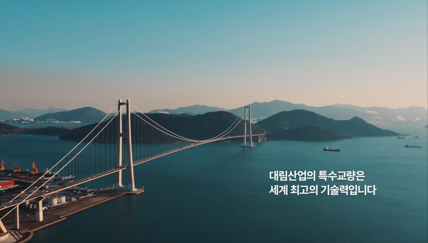Won an Order for Vietnam’s Largest Coal-fired Thermoelectricity Plant Project Worth USD710 Million
DATE 2012.05.25
VIEW 3393
Won an Order for Vietnam’s Largest Coal-fired Thermoelectricity Plant Project Worth USD710 Million

Photo: Yoon Kim, Vice Chairman of Daelim, Bu Duk Tuwan, CEO of Petrovietnam Construction, and Toshihiko Kita, CEO of Sojitz (left to right in the front row)
A contract for the construction of the Thai Binh 2 Thermoelectricity Plant Project amounting to USD1.2 billion (USD 0.71 trillion for Daelim, USD 0.12 trillion for Sojitz and USD 0.37 trillion for PVN) was signed between the PVN (PetroVietnam National Oil and Gas Group) and the Daelim-Sojitz consortium at the PVN head office in Hanoi, Vietnam, on May 22, 2012. Yoon Kim, Vice Chairman of Daelim, and major officials of the project owner attended the signing event.
This project is to build Vietnam’s largest coal-fired thermoelectricity plant with the capacity of 1,200 MW, which was ordered by the PVN to meet increasing electrical power needs in Vietnam. The PVN plans to sell electrical power generated by the plant to the EVN (Electricity of Vietnam) in the future.
Daelim will construct 2 coal-fired thermoelectricity plants with the capacity of 600 MW for 45 months in Thai Binh 170km southeast from Hanoi. In particular, Daelim will conduct the basic construction design that is regarded as high value-added sector for sophisticated plant projects, detailed design, supply of power blocks including boilers and main equipments, and trial operation for the project.
Meanwhile, steam turbines will be supplied by Sojitz and the construction will be implemented by Petrovietnam Construction, a subsidiary of PVC. Daelim which has been fostering the power plant construction business as a future growth engine presented differentiated design plans for this project, which was highly recognized as the optimized design for initial investments and maintenance from the project owner.
Yoon Kim, Vice Chairman of Daelim, said, “We had won an order for the construction of Rach Gia Harbor of Vietnam in 1966 and sent the deposit to the Bank of Korea, which became Korea’s first acquisition of foreign currencies. I believe that this project will allow us to enhance our competitiveness in receiving new orders in Vietnam and Southeast Asia where needs for the construction of power plants is sharply increasing.”






